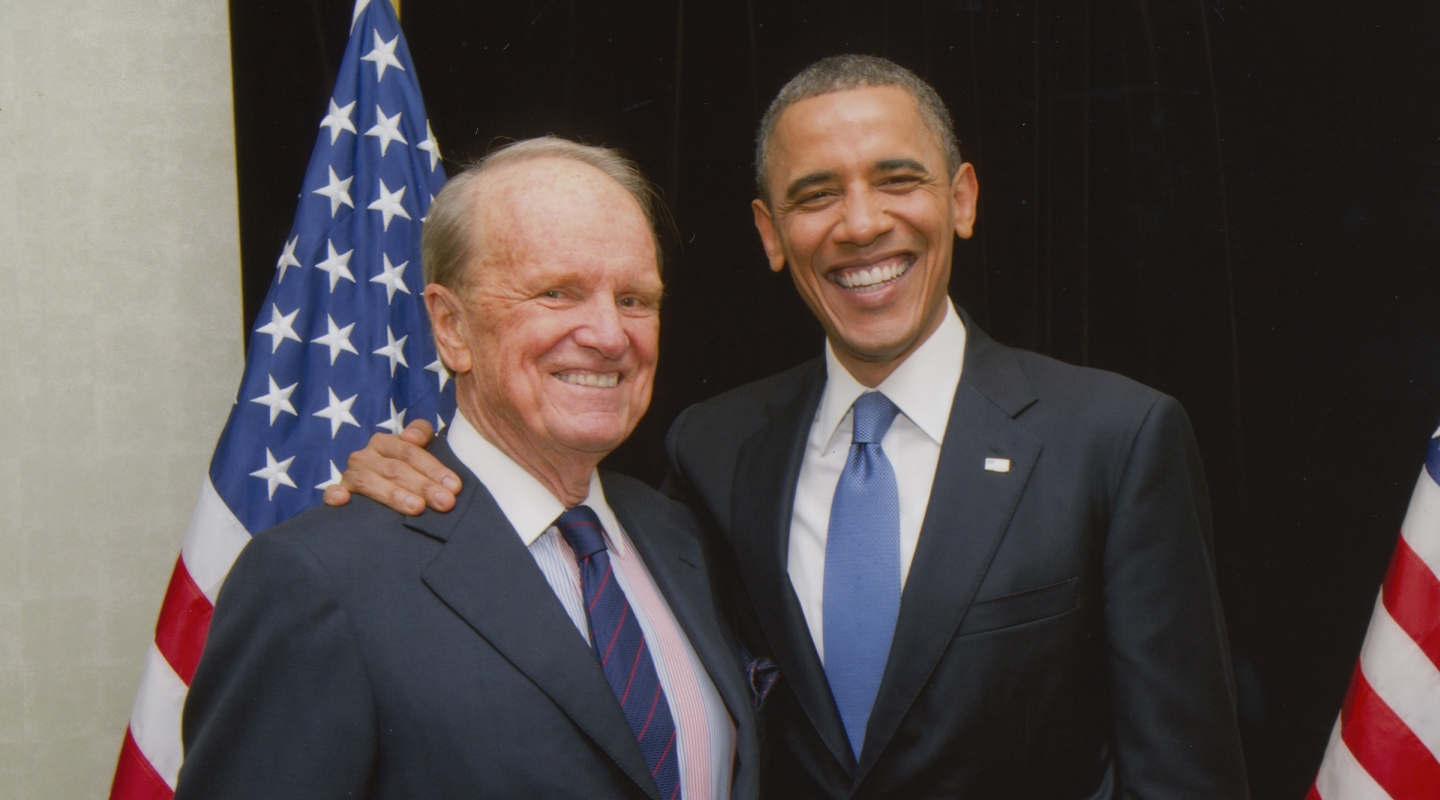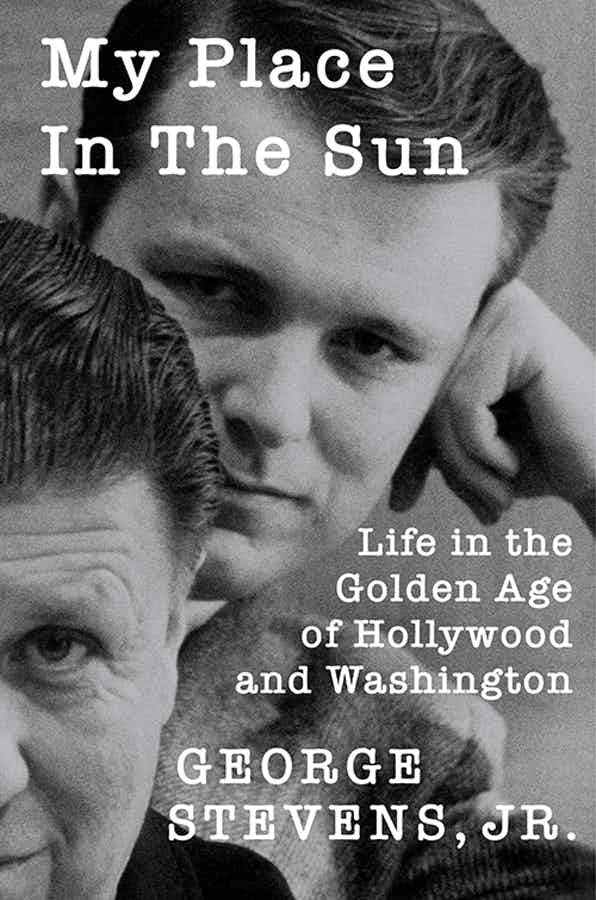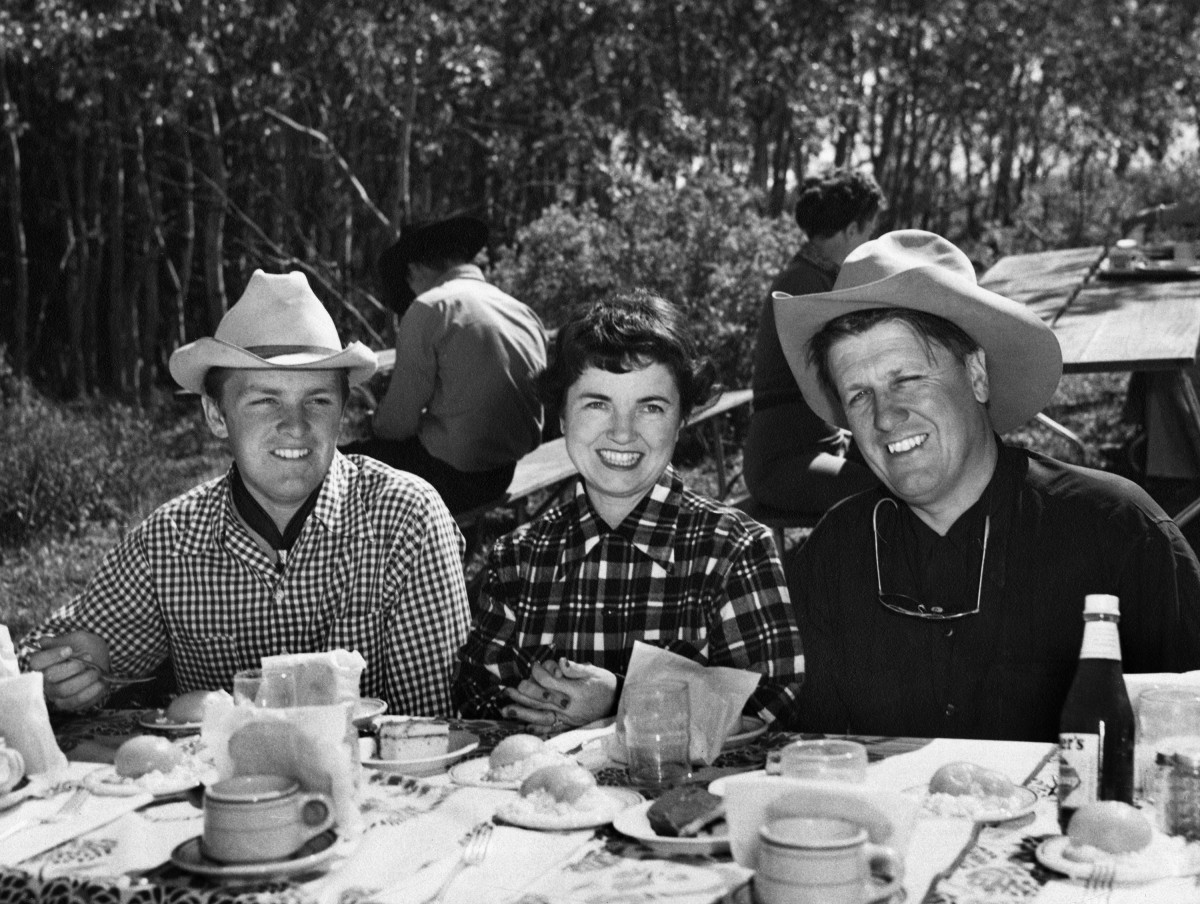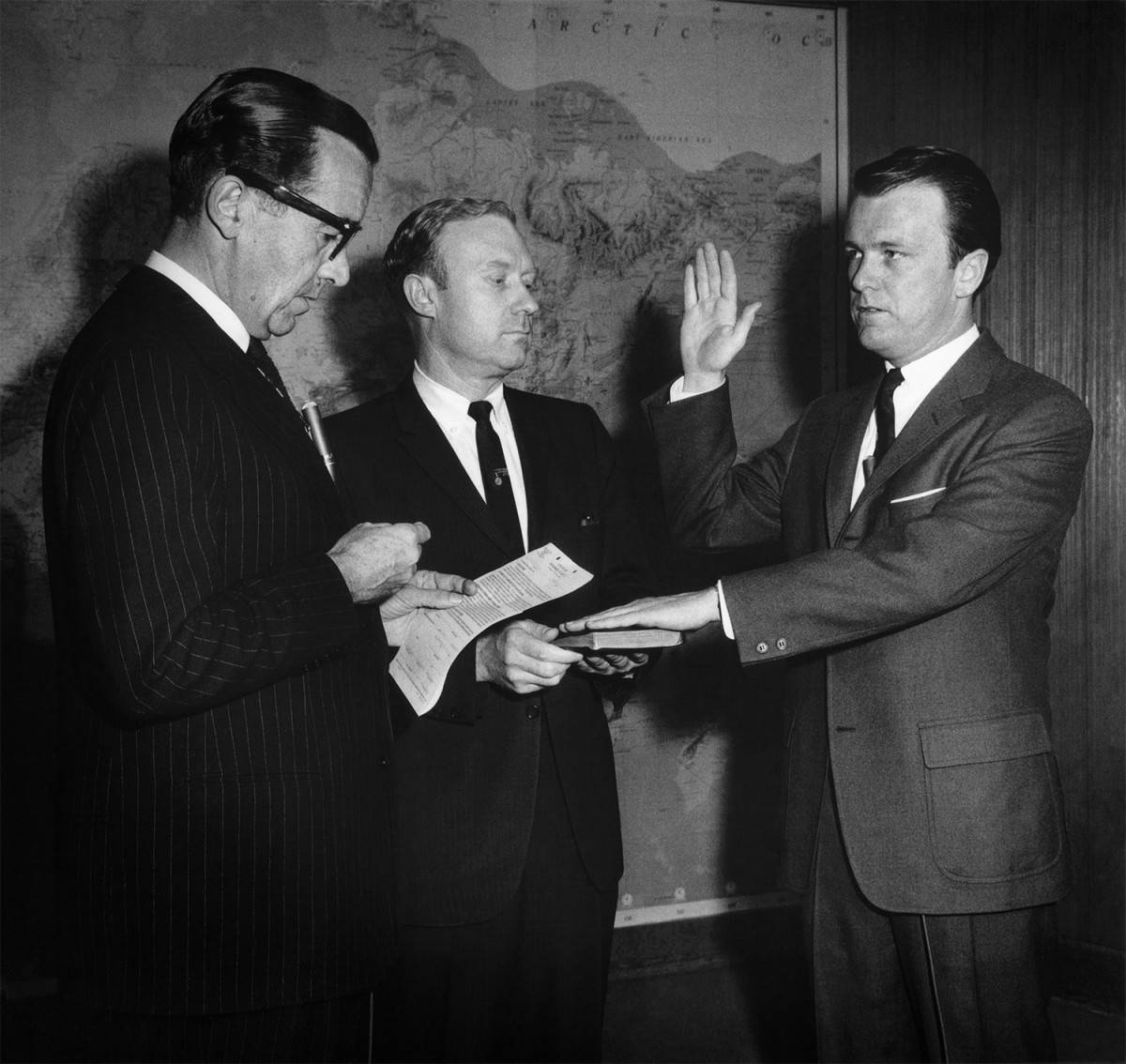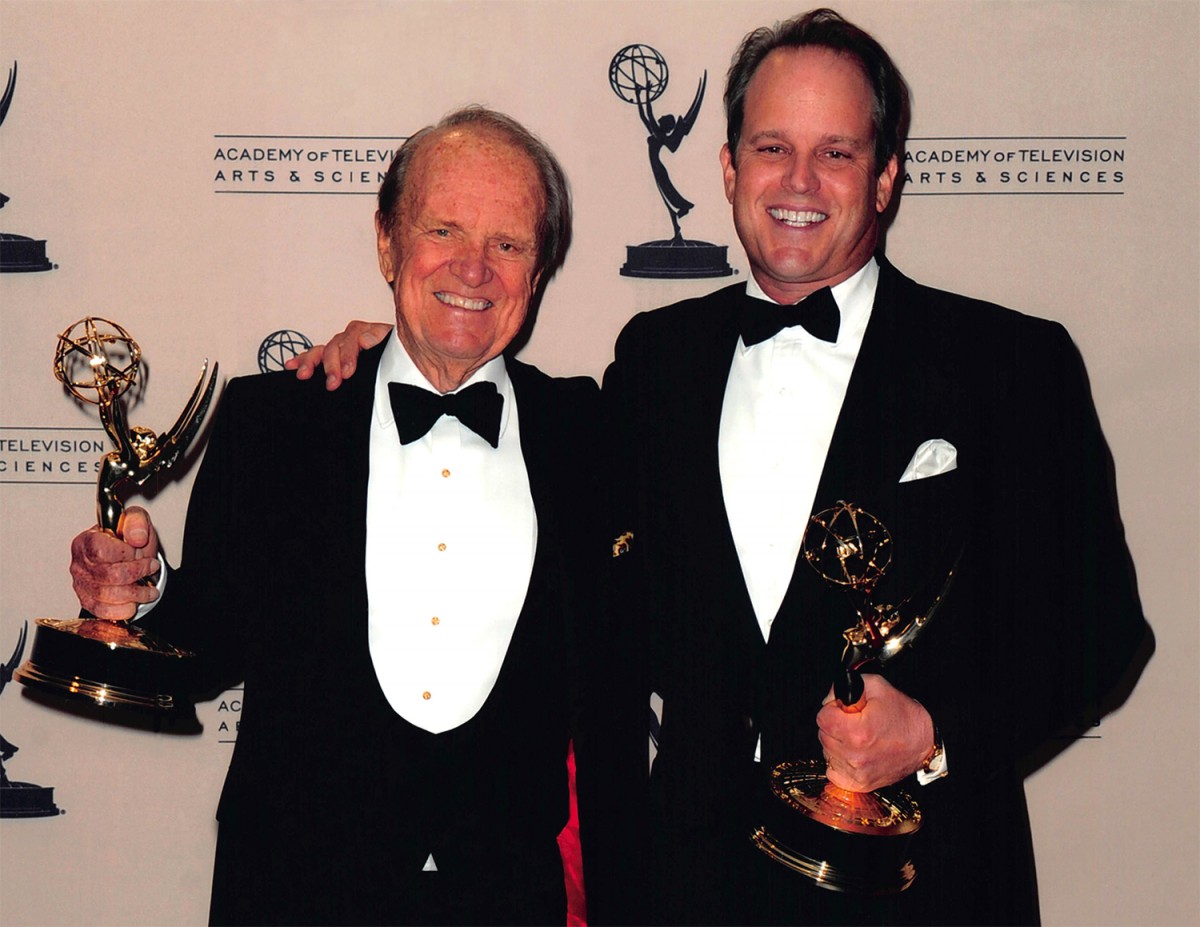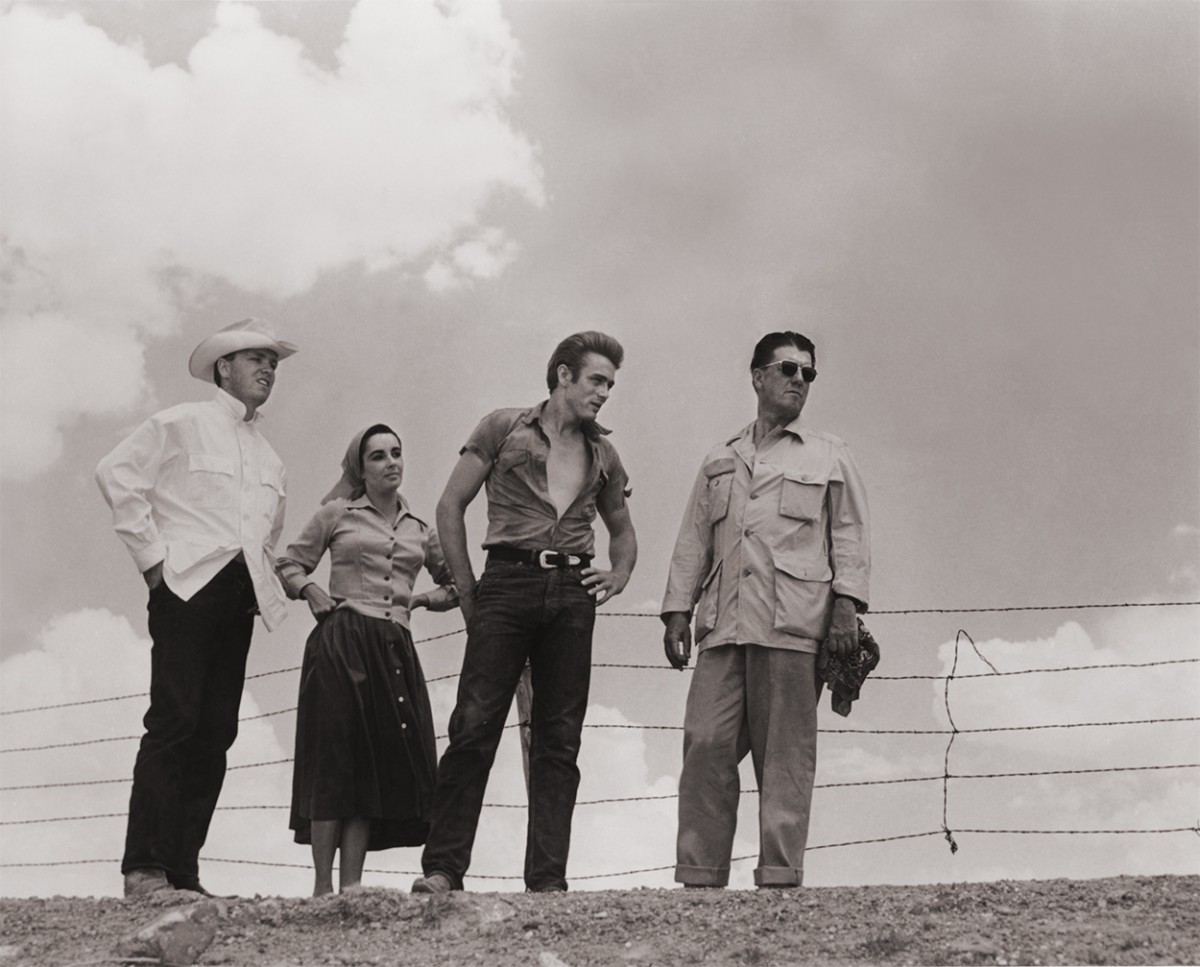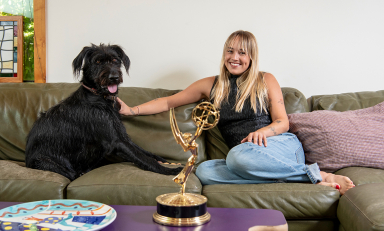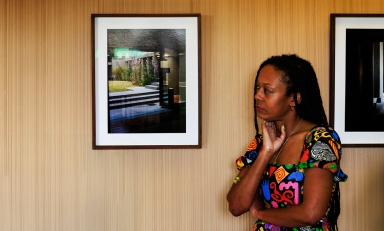From Elizabeth Taylor to President Obama, George Stevens Jr. ’53 reflects on an unparalleled career from the backlots of Hollywood to the corridors of power in Washington, D.C.
When George Stevens Jr. ’53 was a junior at Oxy, he accompanied his parents to the 24th Academy Awards, where his father was nominated as best director. They sat together inside the RKO Pantages Theatre on March 20, 1952, as Joseph L. Mankiewicz—best director winner in consecutive years for A Letter to Three Wives and All About Eve—announced the formidable list of nominees: John Huston, The African Queen; Vincente Minnelli, An American in Paris; William Wyler, Detective Story; Elia Kazan, A Streetcar Named Desire; and Stevens for A Place in the Sun, his adaptation of Theodore Dreiser’s 1925 novel An American Tragedy.
“I would not be telling you this story if The African Queen had won,” Stevens Jr. admits with a laugh. His father’s acceptance speech lasted all of 19 seconds, and after the ceremony, riding home with his Oscar resting between them on the front seat, he turned to his son and said, “We’ll have a better idea what kind of a picture this is in about 25 years … that the thing of art is the test of time.”
Seventy years ago, Stevens “did not know that he was talking to the future founder of the American Film Institute,” his son says. “But that idea about the test of time is at the very core of AFI and it’s at the core of the Kennedy Center Honors—it’s the work that lasts.”
While his father never wrote a memoir—he kept his two Oscars and other awards in a storage facility—Stevens Jr. (who received an honorary degree from Occidental in 1996) had been thinking about a book for years. “I did kind of an inventory of interesting things that had happened chronologically around 2000, because I felt I might do it someday,” he says. The pandemic gave him the time to finish his memoir, My Place in the Sun: Life in the Golden Age of Hollywood and Washington, published in May by the University Press of Kentucky.
“I didn’t quite realize it until I was writing the book, but I’ve known so many interesting and accomplished people,” Stevens Jr. says in June at a hotel restaurant in Beverly Hills, just hours before attending an AFI banquet honoring Julie Andrews. Now he’s in the process of recording the 479-page tome as an audiobook, “which is a huge commitment,” he admits. Would he have written a shorter book if he’d thought that out? “Yeah, absolutely.”
More than a memoir of his own life and career —which could fill an entire book (and was the subject of a 2003 Occidental magazine story)—My Place in the Sun details an extraordinary family history that encompasses five generations of entertainers—beginning with Stevens Jr.’s great-grandmother, Georgia Woodthorpe, “a celebrated leading lady in San Francisco,” and mother to Georgie Cooper, a soprano and soubrette who would marry Landers Stevens in 1903. (Cooper made her stage debut a decade earlier, in a production of Little Lord Fauntleroy at the Burbank Theater in Los Angeles.)
George Stevens Sr. was born in 1904, the same year the nickelodeon was introduced in New York—“the device that would soon disrupt his parents’ livelihood and, in time, provide one for him,” Stevens Jr. writes.
Jumping ahead to 1933, Stevens Jr. made his first and only acting appearance on film at 16 months, appearing alongside George “Spanky” McFarland in “Wild Poses,” an Our Gang short. Soon after, his father, then a cameraman, would make his directorial debut in a less well-remembered series of shorts by producer Hal Roach titled The Boy Friends. At age 30, after directing Katharine Hepburn in the 1935 box office hit and Oscar-nominated Alice Adams, Stevens was hailed by critic James Agee as “the youngest important director in Hollywood.”
Over the next four decades, Stevens would make nearly two dozen features, perhaps most notably the “American Trilogy” of A Place in the Sun, Shane (1953), and Giant (1956). Going a little deeper into his father’s canon, Stevens Jr. has a special fondness for I Remember Mama (1948) with Irene Dunn—his father’s first film after returning from WWII and “a beautiful film about San Francisco”—as well as Swing Time (1936), which Stevens Jr. regards as the best of the 10 screen pairings of Ginger Rogers and Fred Astaire.
Was there a film that his father wanted to make that he never did? “He wanted to make Paths of Glory before the war when he was directing Gunga Din (1939) and all these comedies. [RKO passed on the project, which was made in 1957 by Stanley Kubrick.] And as I say in the book, I asked him, ‘Did you ever see it?’ He said, ‘No. … I just didn’t want to attend another man’s wedding.’”
In 1949, Stevens Jr. enrolled at Oxy with about half a dozen classmates from Harvard School (today’s Harvard-Westlake). “You know, we didn’t spend our junior and senior years thinking about where we were going to college,” he says. “Occidental had a good reputation and it turned out to be very good for me.”
Early in the production of A Place in the Sun, Stevens Jr. drove from Occidental to Paramount Studios one Saturday to watch his father at work. That was the day he met Elizabeth Taylor, who was shooting a scene with Montgomery Clift. “She was nearing 18, a month older than I, vivacious and light-hearted, much more a girl than a star,” he writes in his memoir. “I was certain I had met the most beautiful girl in the world.”
Taylor invited him to join her for lunch, where they enjoyed hamburgers and chocolate shakes at a corner table in the Paramount commissary. Although he remembers little of their conversation, he writes, “It did occur to me that my report of the event would be eagerly received that night at the Phi Gamma Delta house.”
After Stevens came back from the Air Force in 1956, he was having “a very nice career in Hollywood, directing episodic television every now and then,” including Alfred Hitchcock Presents, Peter Gunn, and Philip Marlowe. He also shot location footage for his father on The Diary of Anne Frank (1959). “And we were about to do The Greatest Story Ever Told (1965). So, when Edward R. Murrow came calling, I was in a rich pasture.”
In 1962, at Murrow’s invitation, Stevens Jr. took charge of the motion picture and TV activities of the United States Information Agency, which was charged with telling America’s story abroad through the production of documentaries that were distributed to 130 countries worldwide.(During his five-year tenure, USIA films received four Academy Award nominations, winning a documentary short Oscar in 1964 for Nine From Little Rock.)
Stevens Jr.’s government experience made him an ideal candidate to be the founding director in 1967 of the American Film Institute, which established the AFI Life Achievement Award in 1973. Five years later, he went to Roger Stevens (no relation) with the idea to honor individual achievement in dance, music, theater, opera, film, and television. His guiding influence was John F. Kennedy, who once said, “The life of the arts, far from being an interruption, a distraction, in the life of a nation, is very close to the center of a nation’s purpose—and is a test of the quality of a nation’s civilization.”
Stevens Jr. produced the Kennedy Center Honors from 1978 to 2014, bestowing medals to 188 luminaries over that span. In its first year, the list of honorees was Marian Anderson, Fred Astaire, George Balanchine, Richard Rodgers, and Arthur Rubinstein. “And it just went on from there,” he says.
From the USIA to AFI to the Kennedy Center Honors, Stevens Jr. got to know every U.S. president from JFK to Barack Obama ’83. He first met Obama at a 2003 fundraiser hosted by a mutual friend, Vernon Jordan (a member of President Bill Clinton’s transition team). Largely unknown then, Obama was running for the U.Ss. Senate, and Stevens Jr. was not asked to write a check that night: “Sometimes they need people [to fill the room], so Vernon encouraged me to come,” he recalls.
Meeting Obama for the first time, “I was just so impressed,” he recalls, “We ended up talking about Thurgood Marshall—there were other people standing around—and he never took his eyes off of me.” (At a fundraiser some years later hosted by Stevens Jr. and wife Liz, he brought up that first meeting to Obama, and Jordan’s caveat about money. “I’ll have to talk to Vernon,” Obama drily replied.)
At the Robert Kennedy Memorial Foundation event in November 2005 on what would have been Kennedy’s 80th birthday, Obama told the story of Kennedy’s 1967 trip to the Mississippi Delta with Medgar Evers, where he wept over the plight of a small child with a swollen stomach. “He told that story as a way of what we have to do, and he did it with grace, charm, and purpose,” Stevens Jr. says. He went back to his office at the Kennedy Center and wrote Obama a note, saying, “I think you ought to run for president in 2008—not 2012 or 2016.”
Following his work on Separate but Equal (the Emmy-winning 1991 miniseries starring Sidney Poitier depicting the landmark Supreme Court desegregation case Brown v. Board of Education), he was inspired to write his first play, about the life of pioneering Supreme Court Justice Thurgood Marshall. With Laurence Fishburne in the title role (and Vernon Jordan as a producer), Thurgood played to sold-out Broadway audiences for 126 performances in 2008 and was filmed at the Kennedy Center for HBO in 2011, with son Michael Stevens directing.
In 2003, Michael joined the Kennedy Center Honors team as a writer (he was promoted to producer four years later), “bringing a more exacting appreciation of contemporary music than that of his father,” Stevens Sr. writes. Michael inherited the Stevens show-biz gene and demonstrated a gift for storytelling and spectacle—such as the year he brought in 100 Boston Red Sox fans (led by Smokey Robinson) to serenade Kennedy Center honoree Neil Diamond with a rendition of “Sweet Caroline” in 2011.
“He was good at that,” Stevens Jr. says. “Michael had a lot of self-confidence and was a little bossy,” he notes with a laugh, “but worked hard and had good ideas and was also very practical. He was good with getting the best out of people.”
Michael died from complications of stomach cancer in 2015 at age 48. “He was a good and courageous man, and a beautiful storyteller who had so much more to offer,” Stevens Jr. writes in his memoir. “The heaviest sorrow is that [children] John and Lily are deprived of their father’s gentle influence, his example and his love. … Not a day goes by that I do not think of Michael Stevens.”
At age 90—which you would never guess to look at him— Stevens Jr. is still contemplating new projects (including a historical biography he’s not at liberty to discuss). He’s also continuing his sideline in life: safeguarding his father’s legacy. “The studios used to be very neglectful but are less so now,” he says. Stevens Jr. has been involved in three separate restorations of Giant over the years; at the 2022 TCM Classic Film Festival in April, he and Steven Spielberg introduced a new 4K restoration at the TCL Chinese Theater, the same venue where the film had its L.A. premiere back in 1956.
“It’s still a powerful film,” Stevens Jr. says of the film that won his father his second Oscar. “There’s nothing dated about it.” With three larger-than-life movie stars (James Dean, Rock Hudson, and Elizabeth Taylor) at the center of the story, it stands to reason that audiences will be watching the film 100 years from now. “That’s the test of time.”
Turning to his own body of work, if Stevens Jr. could show his father something that he made that came out after his passing in 1975, what would it be? “Well, he never saw the Kennedy Center Honors, so I would start there. I’d show him Separate but Equal. And then I’d have to show him George Stevens: A Filmmaker’s Journey (1984).”
Does Stevens Jr. think his dad would give him notes on it? “No, no. I really got it right. That’s a very satisfying thing. I worked on it so hard. We’re kind of on the same wavelength. I like his pictures so much, and I think he would like mine because we share a similar sensibility.”
Despite the fact that he hasn’t been to the movies lately, Stevens Jr. is optimistic about the future of film. “My father used to say the only reason the movie industry survives is that movies are indestructible—that the business is indestructible, no matter what they do. Now it’s being tested. And it will survive and flourish in some fashion. I’m a big-screen person, although I’ve made things for the small screen. But the bigger the screen, the better.”

